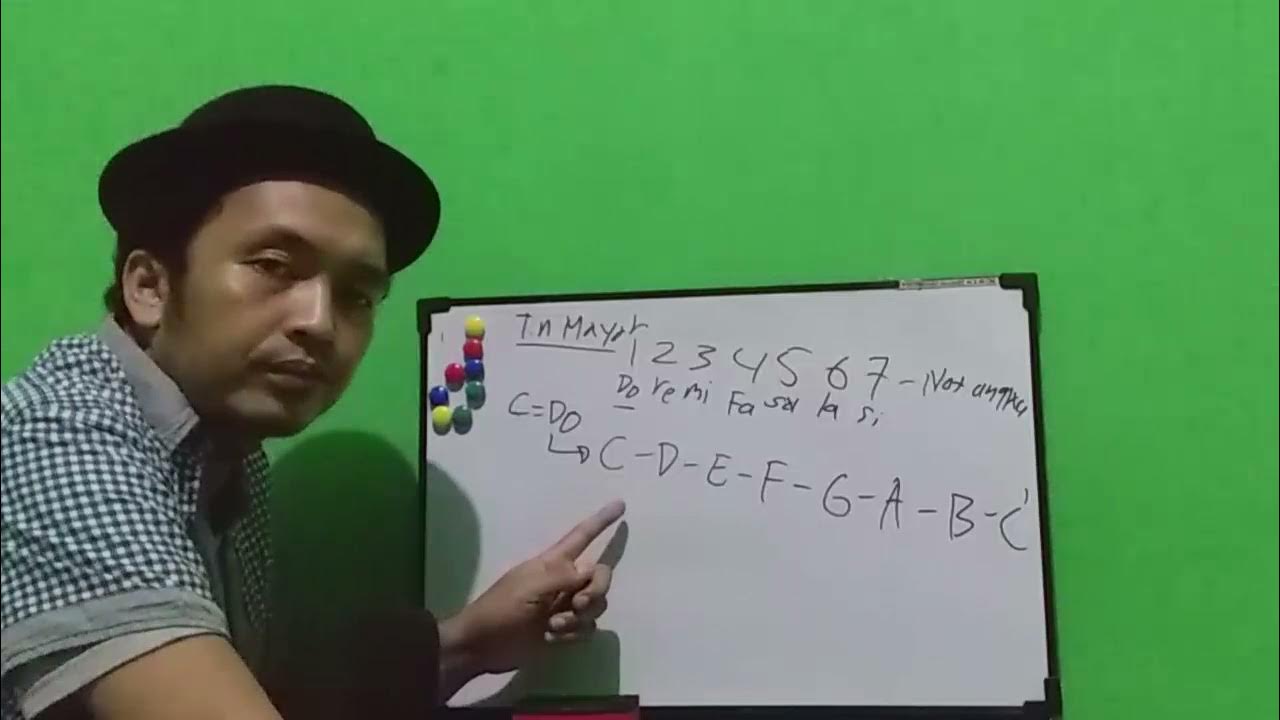Music Theory for Beginners - Lesson 1 - Learn the Steps of Major Scale on Piano
Summary
TLDRIn this DIY music theory video, the host introduces the basics of music theory, emphasizing its importance for piano players. Key concepts covered include whole steps and half steps, which are the smallest and largest movements on a piano keyboard, respectively. The video also explains sharps and flats, which adjust a note by a half step. A major scale construction formula is introduced: whole, whole, half, whole, whole, whole, half steps. The host promises to connect this theory with practical piano playing and encourages viewers to subscribe for more lessons on music theory and piano.
Takeaways
- 🎼 **Music Theory's Role**: Music theory is essential for understanding how music is constructed and for playing piano effectively.
- 🔍 **Understanding Distance and Movement**: Key aspects of music theory include the distance between notes and how they move in relation to each other.
- 🎹 **Whole Steps and Half Steps**: A half step is the smallest movement on a piano keyboard, while a whole step is equivalent to two half steps.
- 📈 **Ascending vs. Descending**: When moving a half step up, you may hit a black key, but when moving down, you typically hit a white key due to the keyboard's layout.
- 🎵 **Constructing Major Scales**: Major scales can be constructed using a specific formula of whole and half steps: whole, whole, half, whole, whole, whole, half.
- ⚖️ **Enharmonic Equivalence**: Notes like E sharp and F flat are enharmonically equivalent, meaning they are the same note but represented differently.
- 🎶 **Sharps and Flats**: Sharps raise a note by a half step, while flats lower it by a half step, and they are commonly used in music composition.
- 👉 **Practical Application**: Understanding music theory aids in finger placement, recognizing correct notes, and composing music.
- 🔑 **Formula for Major Scales**: The major scale formula can be applied to any starting note to construct a scale, emphasizing the importance of the starting note.
- 📚 **Continuing Education**: This lesson is part of a series that will delve into more complex aspects of music theory, such as chords and chord progressions.
Q & A
What is the purpose of this music theory course?
-The course aims to teach the basics of music theory, focusing on how music is structured and the relationships between notes and chords. It is designed to complement the 'Do-it-yourself Learn to Play Piano' course.
Why is music theory important when learning to play the piano?
-Music theory helps pianists understand what they're playing, improving their ability to play the correct notes and compose music. It also aids in analyzing music and learning from other composers.
What are the two main concepts introduced in this lesson?
-The two main concepts discussed are 'distance' between notes and 'movement' of notes, which are essential for understanding how music is structured.
What is a 'half step' in music theory?
-A half step is the smallest movement on a piano keyboard, moving to the closest adjacent note, either black or white.
What is a 'whole step' in music theory?
-A whole step is the distance of two half steps combined. On the piano, it involves skipping one note between the starting and ending notes.
Why are some half steps between white keys and some between a white and black key?
-Some white keys, like B and C, or E and F, are next to each other without a black key between them, so half steps between these are from white to white. Other white keys have black keys between them.
What is a 'sharp' in music theory?
-A sharp (♯) raises a note by one half step. For example, C sharp is the black key directly to the right of C.
What is a 'flat' in music theory?
-A flat (♭) lowers a note by one half step. For example, D flat is the black key directly to the left of D.
What are enharmonic equivalents?
-Enharmonic equivalents are notes that sound the same but are written differently, such as D sharp and E flat.
What is the formula for constructing a major scale?
-The major scale formula is: whole step, whole step, half step, whole step, whole step, whole step, half step. This formula helps create the correct intervals between notes in a major scale.
Outlines

Dieser Bereich ist nur für Premium-Benutzer verfügbar. Bitte führen Sie ein Upgrade durch, um auf diesen Abschnitt zuzugreifen.
Upgrade durchführenMindmap

Dieser Bereich ist nur für Premium-Benutzer verfügbar. Bitte führen Sie ein Upgrade durch, um auf diesen Abschnitt zuzugreifen.
Upgrade durchführenKeywords

Dieser Bereich ist nur für Premium-Benutzer verfügbar. Bitte führen Sie ein Upgrade durch, um auf diesen Abschnitt zuzugreifen.
Upgrade durchführenHighlights

Dieser Bereich ist nur für Premium-Benutzer verfügbar. Bitte führen Sie ein Upgrade durch, um auf diesen Abschnitt zuzugreifen.
Upgrade durchführenTranscripts

Dieser Bereich ist nur für Premium-Benutzer verfügbar. Bitte führen Sie ein Upgrade durch, um auf diesen Abschnitt zuzugreifen.
Upgrade durchführenWeitere ähnliche Videos ansehen

Pianote and Piano Marvel Review - Learning Piano Online as an Adult

Cara Mencari Tangga Nada Mayor berdasarkan Interval atau jarak Nada

Essential Music Theory Every Guitar Player Should Know - Beginner Music Theory Lesson

Curso de Teoria Musical - Aula 01: Notas, Acidentes e Intervalos l Aula #38

music theory is easy.

How To Start Learning The Piano - Self Taught!
5.0 / 5 (0 votes)
